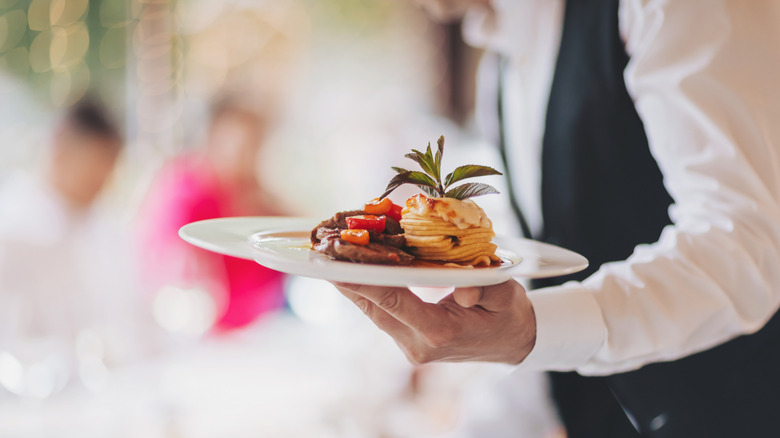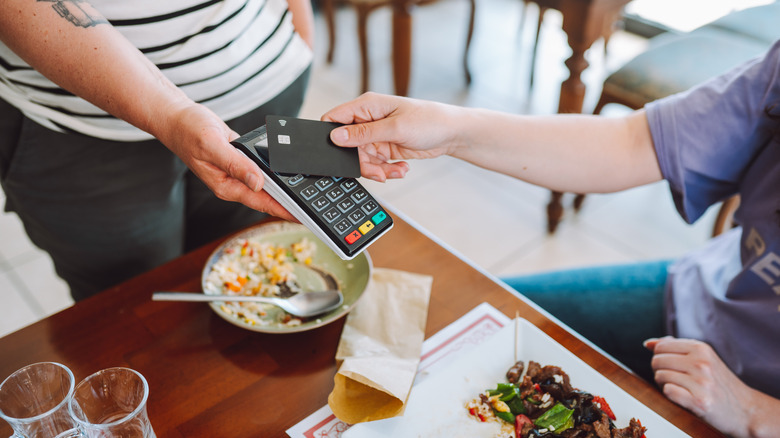The Common Restaurant Etiquette Rule You Probably Break Every Time
For a small handful of people, bossing the wait staff around is all part of the fun of eating out. For these individuals, it's just not a good night unless they get to send back a perfectly cooked steak, claim they ordered the opposite of what they originally said, or (Cardinal sin of service culture) click their fingers at a member of staff who's battling every facial muscle to keep their smile in place. Fortunately, these diners are in the minority and most people view being polite to servers as a basic part of restaurant etiquette.
But even well-meaning folks can sometimes commit a dining faux pas. Maybe you want to save the busy wait-staff time by stacking your plates or you want to avoid rudely waving so you push your plate away instead, collecting all the crockery in the center of the table. Believe me, as someone who worked in service, I know (and appreciate) that you're trying to help, but sometimes these habits can actually make clearing your table harder for the staff.
Los Angeles-based restaurant and hospitality consultant at Savory Hospitality, Salar Sheik, confirms this. Known as the Restaurant Rescue Guy with more than 20 years in the industry, Sheik explains that, "Pushing your plate away can make it awkward for servers to reach, especially in tight spaces or when trying to maintain safety and cleanliness. Servers are trained to stack plates a certain way to avoid spills and injury. The best thing you can do is leave your items neatly placed and accessible."
How to politely tell your server when you've finished eating
While yelling and snapping your fingers are definite no-nos, Sheik acknowledges it can be hard to know the best way to get your server's attention when you've finished eating. What makes things even more confusing is that etiquette varies based on the type of restaurant you're in — for example, fine dining rules are very different from what's expected in more casual settings. Sheik explains that, "Fine dining tends to rely more on nonverbal cues, while casual service expects more direct communication."
According to Sheik, the best way to signal to your server in a fine dining restaurant is to "lay your napkin loosely to the left of your plate (not on the plate itself). For utensils, place your knife and fork together in the 4 o'clock position on your plate — parallel with the handles resting at the bottom right."
However, in a casual restaurant, servers won't be so tuned in to these types of signals, so you may need to make eye contact to get a staff member's attention. Other cues Sheik recommends include leaning back in your chair or simply closing your cutlery on your plate to show you've finished. Sheik also notes that "a polite, 'We're all set here when you have a moment,' works well."

